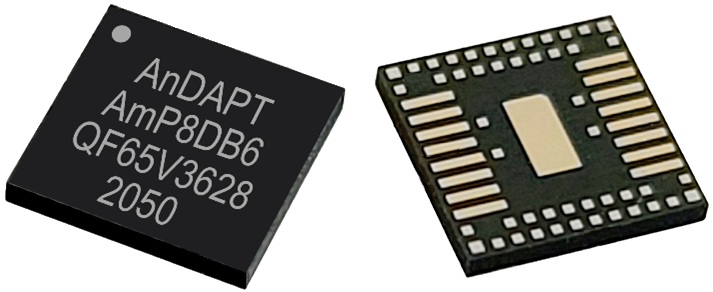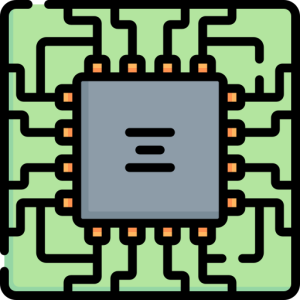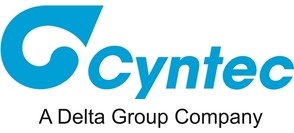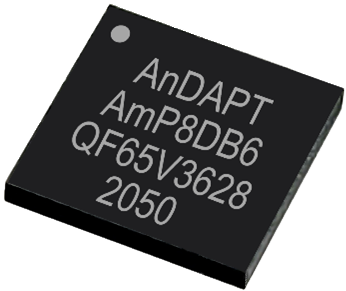Unleashing the Power of Programmability
We build awesome programmable devices. One AmP chip combines up to 10 power rails, analog, and digital components into a compact 5mm x 5mm package.
Programmable power designed with AI

Products
AnDAPT offers power products for popular FPGAs/SoCs like Xilinx, Altera, and Microchip while also offering custom ICs designed based on your requirements.

Benefits
Integrated Functionality
Integrating up to 10+ rails with analog and digital functions.
Advanced Programmability
Program AmP IC within minutes for fast changes or different applications.
Proven Designs
Tested and ready-to-use designs for popular SoCs/FPGAs applications.
Space Saving
More than 17% PCB space saving in comparison to competitor designs.
Easy to Configure
Easy to configure designs allow for a more stress-free building process.

Time-to-Market
Reduced design hours means a faster time-to-market.
Our Partners











One AmP Chip

Get in Touch
Contact one of our experts to see how we can help bring your system to life!
Get in Touch
One AmP Chip

Get in Touch
Contact one of our experts to see how we can help bring your system to life!
Get in Touch
One AmP Chip

Get in Touch
Contact one of our experts to see how we can help bring your system to life!




